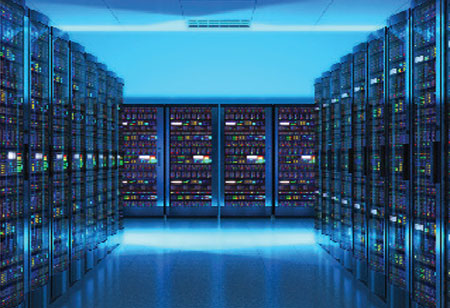
Growth & Development Of Data Center


Rahul Dhar, Country Director - Data Centers, Microsoft, 0
In India, the need for data center infrastructure is growing exponentially, as cloud adoption, as well as data consumption and generation by half a billion digital users, are reaching unprecedented levels. As a result, India is among the major players and one of the fastest growing countries in the data center sector in the APAC region. A report by JLL India described Indian data center sector would need close to US $3.7 billion over the next three years to meet the industry requirement for 6-7 million sq. ft. of development.
It also said India’s data center landscape would continue to evolve owing to the growing reliance on digital technologies, 5G rollout, IoT-linked devices, cloud adoption, and data localization. A major thrust has been developed by robust digital payment, e-governance projects and the thriving startup ecosystem. It is also interesting to note that last year; the data center industry in India consumed 250 MW of power, surpassing even the key markets in APAC. And as the data center landscape continues to evolve, the industry is expected to grow exponentially to reach 1,007 MW by 2023 from its existing live capacity of 450 MW.
India & its Growing Data Center Marketplace
As it is, India accounts for 1-3 percent of the global market. Since fiscal 2017, the industry has been recording an annual growth of 25-30 percent to touch $1 billion in fiscal 2019, a CrisilResearch report said. The country’s data center industry is primarily concentrated in the top four cities Mumbai, Noida, Bengaluru, and Chennai, accounting for 60 percent of the total data center sites and over 75 percent of IT load capacities. Notably, Mumbai has 40 percent of the total installed capacity. A separate Global Data Centre Colocation & Interconnection report by Structure Research (SR) said that the Asia Pacific region will account for half of the global colocation market by 2025, driven by large emerging markets like India. Mumbai and Pune were named as key opportunity markets in India with a combined projected MW of built-out critical IT load capacity growth to reach over 470MW by 2025, followed by Chennai, NCR and Hyderabad.
In terms of policies, the Government of India has drafted a policy for the data centers this is one of the biggest reasons for the surge in the number of data centers. The Government has recently provided infrastructure status for the data center sector, bringing it on par with industries such as Railways, Roadways, and Power. The new status will ease the process of availing long-term credit from domestic and international lenders. Primarily, the policy will also simplify clearances to set up data centers in India. Many stringent building codes are being
made flexible to enable setting up of these specialized facilities/ buildings. Additionally, MeitY and the state governments are working on a scheme for a hyperscale data center to incentivize investments.
The investment within this industry has gone up remarkably. As per the Anarock-Mace report, in 2020, the Indian data center industry attracted close to US $977 million in private equity and strategic investments since 2008, of which nearly 40 percent or approximately US $396 million were infused between the January-September 2020 periods alone. Companies like Yotta Infrastructure, NTT-Netmagic, STT GDC India, Sify Data Centers, CtrlS, and others, are building hyperscale data centers and data center parks in India and the coming new years will see the entry of newer players like AdaniConnex Group, Colt DCS, Singapore-based CapitaLand Group, BAMDLR JV, Yondr, Bridge Data Centers and more.

More hightech firms are collaborating with local telecommunication companies to expand their cloud services presence. For instance, Amazon has partnered with Airtel to sell AWS to its customers. Microsoft will bring in the Azure Cloud on the Jio Network targeting the enterprise and small business users who want to make a shift to a cloud infrastructure. On the same lines, Google will invest up to $1 billion in a partnership with Airtel as part of its Google for India Digitization Fund. India currently has 126 third-party data centers (colocation or hyperscale) spanning 7.9+ million sq. ftand a cumulative IT power capacity of 600+ MW. These third-party centers are owned and or operated primarily by 53 players, while the capacity is concentrated among the top 12 players who operate 95 percent of the total IT power capacity in the country, a report has said.
More hightech firms are collaborating with local telecommunication companies to expand their cloud services presence. For instance Amazon has partnered with Airtel to sell AWS to its customers. Microsoft will bring in the Azure Cloud on the Jio Network targeting the enterprise and small business users who want to make a shift to a cloud infrastructure. On the same lines, Google will invest up to $1 billion in a partnership with Airtel as part of its Google for India Digitization Fund. India currently has 126 third-party data centers (colocation or hyperscale) spanning 7.9+ million sq. ft and a cumulative IT power capacity of 600+ MW. These third-party centers are owned and or operated primarily by 53 players, while the capacity is concentrated among the top 12 players who operate 95 percent of the total IT power capacity in the country, a report has said.
The government has recently provided infrastructure status for the data center sector, bringing it on par with industries such as railways, roadways, and power
The investment within this industry has gone up remarkably. As per the Anarock-Mace report, in 2020, the Indian data center industry attracted close to US $977 million in private equity and strategic investments since 2008, of which nearly 40 percent or approximately US $396 million were infused between the January-September 2020 periods alone. Companies like Yotta Infrastructure, NTT-Netmagic, STT GDC India, Sify Data Centers, CtrlS, and others, are building hyperscale data centers and data center parks in India and the coming new years will see the entry of newer players like AdaniConnex Group, Colt DCS, Singapore-based CapitaLand Group, BAMDLR JV, Yondr, Bridge Data Centers and more.

More hightech firms are collaborating with local telecommunication companies to expand their cloud services presence. For instance, Amazon has partnered with Airtel to sell AWS to its customers. Microsoft will bring in the Azure Cloud on the Jio Network targeting the enterprise and small business users who want to make a shift to a cloud infrastructure. On the same lines, Google will invest up to $1 billion in a partnership with Airtel as part of its Google for India Digitization Fund. India currently has 126 third-party data centers (colocation or hyperscale) spanning 7.9+ million sq. ftand a cumulative IT power capacity of 600+ MW. These third-party centers are owned and or operated primarily by 53 players, while the capacity is concentrated among the top 12 players who operate 95 percent of the total IT power capacity in the country, a report has said.
More hightech firms are collaborating with local telecommunication companies to expand their cloud services presence. For instance Amazon has partnered with Airtel to sell AWS to its customers. Microsoft will bring in the Azure Cloud on the Jio Network targeting the enterprise and small business users who want to make a shift to a cloud infrastructure. On the same lines, Google will invest up to $1 billion in a partnership with Airtel as part of its Google for India Digitization Fund. India currently has 126 third-party data centers (colocation or hyperscale) spanning 7.9+ million sq. ft and a cumulative IT power capacity of 600+ MW. These third-party centers are owned and or operated primarily by 53 players, while the capacity is concentrated among the top 12 players who operate 95 percent of the total IT power capacity in the country, a report has said.